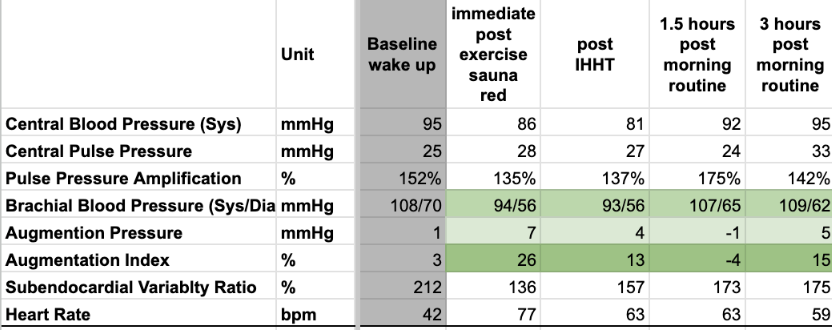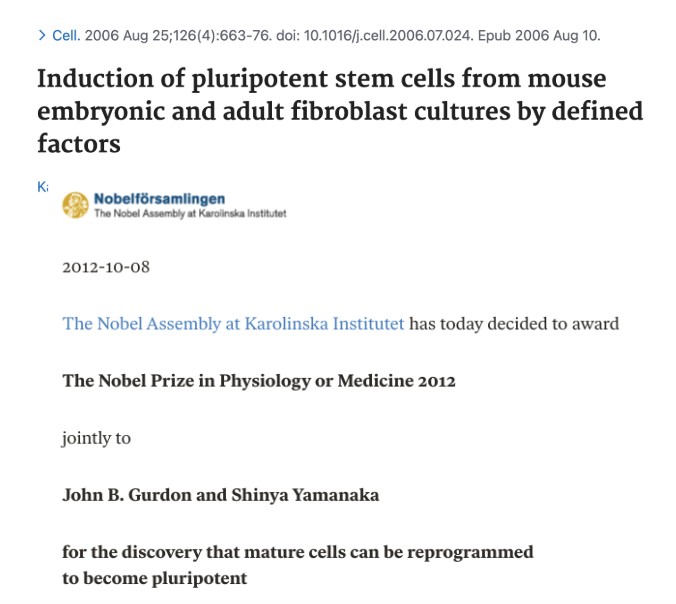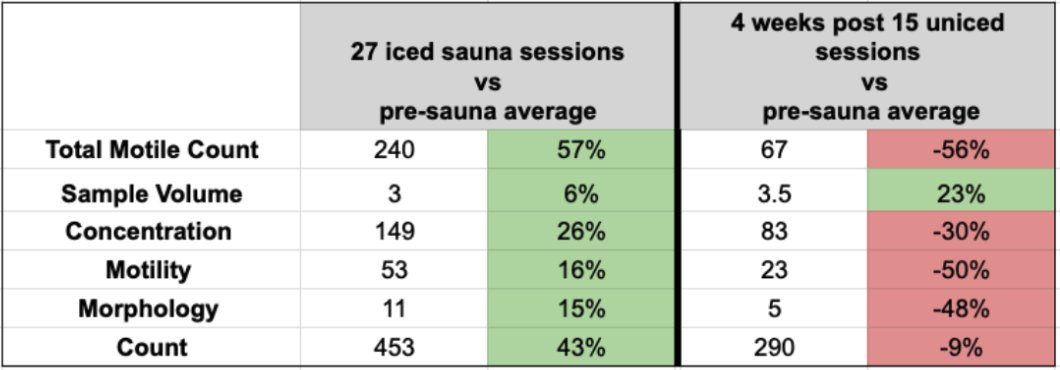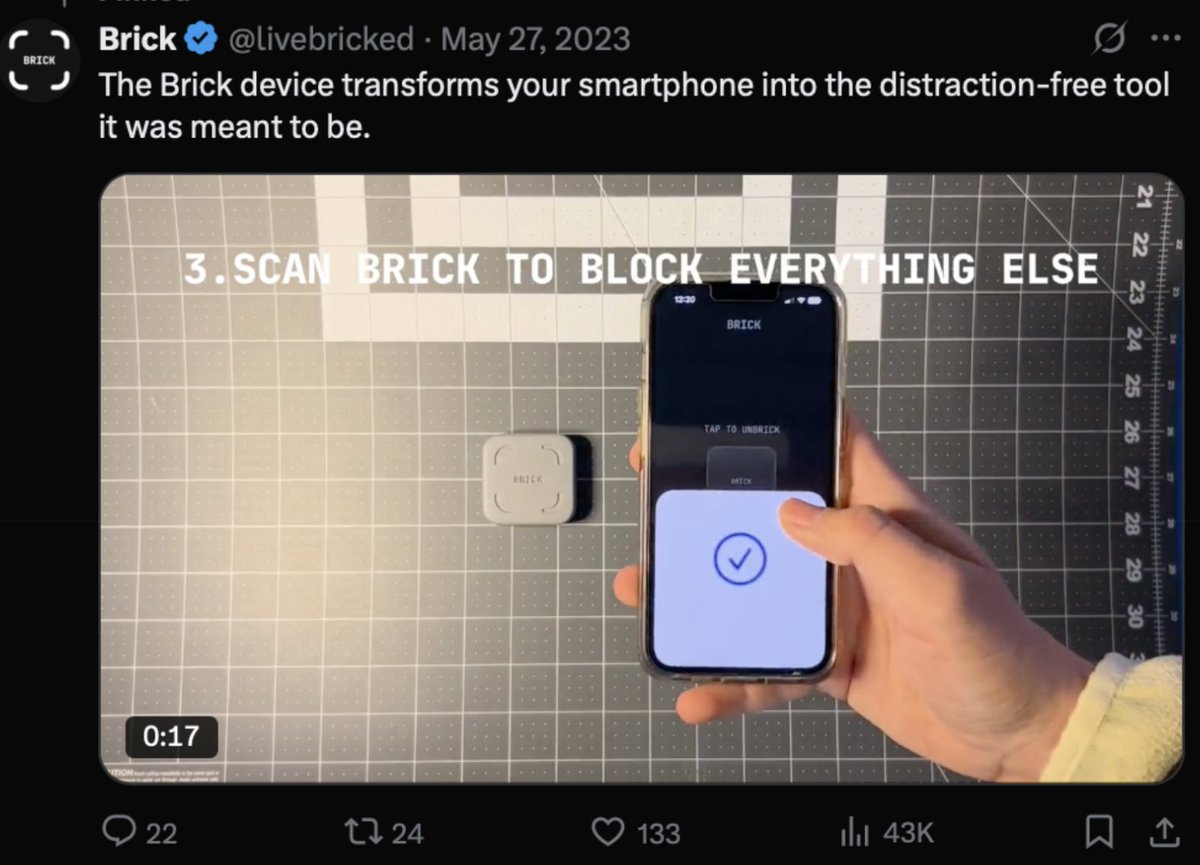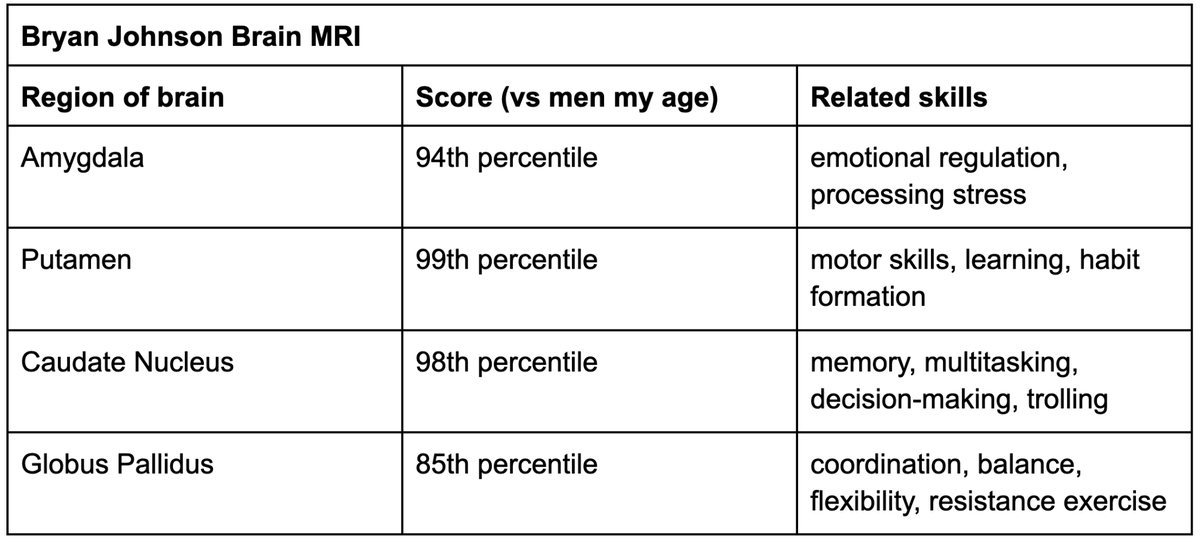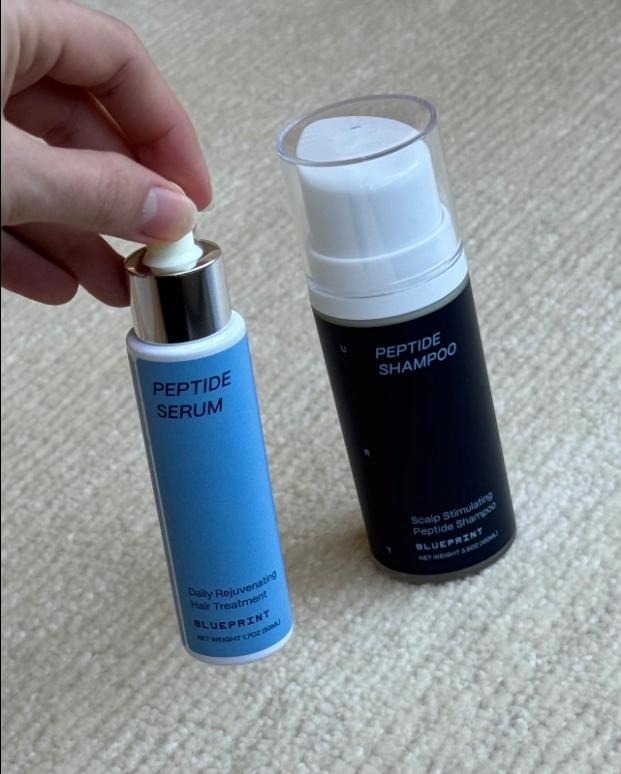I eliminated 85% of microplastics from my ejaculate.
Nov 2024: 165 particles/mL
July 2025: 20 particles/mL
Nearly identical drop in my blood same time period:
Oct 2024: 70 particles/mL
May 2025: 10 particles/mL
Important as a meta-analysis of 36 studies reveals that microplastics induce oxidative stress in the male reproductive system, leading to testicular inflammation, cell death, and reduced testosterone levels, sperm production, and motility.
Two studies last year showed that microplastics were detected in every human testicular and semen samples tested.
The therapy we think most responsible for this reduction is sauna as it also eliminated most environmental toxins in my body, including those linked to various plastics (200 F, 20 min daily w/ ice on the boys). I also avoid the big no-no’s like microwaving in plastic, plastic cutting board, and having a reverse osmosis water system.
To our knowledge, this is the first report of any correlation (esp in the same person over two timepoints) between blood and semen microplastic levels, demonstrating successful microplastic detoxification in the semen following that in the blood.
Nov 2024: 165 particles/mL
July 2025: 20 particles/mL
Nearly identical drop in my blood same time period:
Oct 2024: 70 particles/mL
May 2025: 10 particles/mL
Important as a meta-analysis of 36 studies reveals that microplastics induce oxidative stress in the male reproductive system, leading to testicular inflammation, cell death, and reduced testosterone levels, sperm production, and motility.
Two studies last year showed that microplastics were detected in every human testicular and semen samples tested.
The therapy we think most responsible for this reduction is sauna as it also eliminated most environmental toxins in my body, including those linked to various plastics (200 F, 20 min daily w/ ice on the boys). I also avoid the big no-no’s like microwaving in plastic, plastic cutting board, and having a reverse osmosis water system.
To our knowledge, this is the first report of any correlation (esp in the same person over two timepoints) between blood and semen microplastic levels, demonstrating successful microplastic detoxification in the semen following that in the blood.
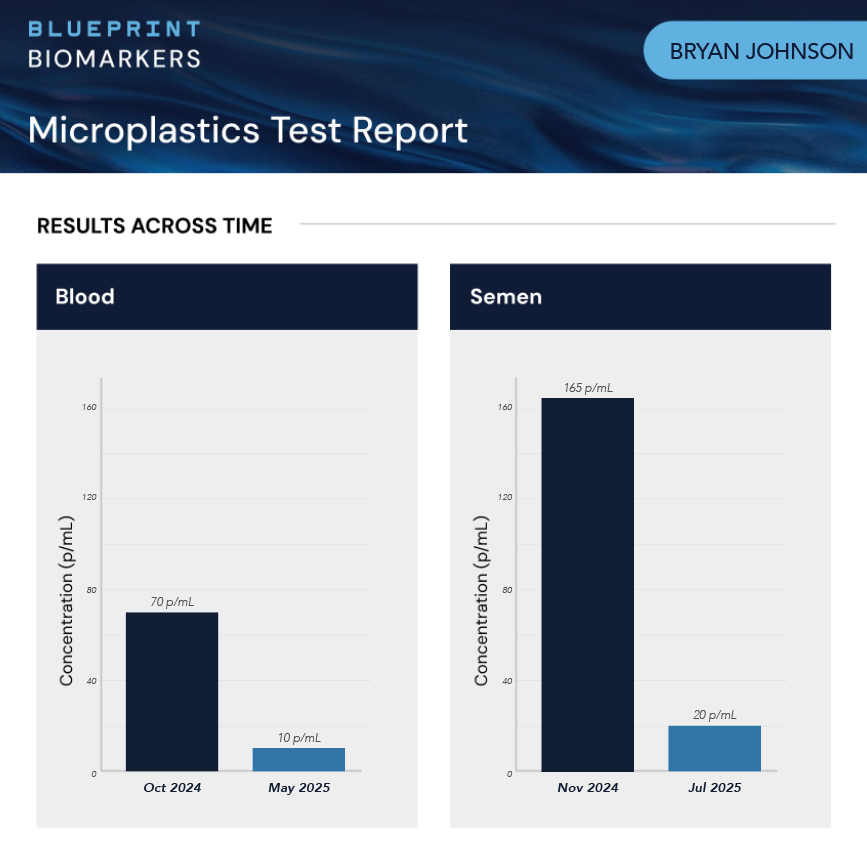
1/ My results offer a new sense of hope for the detoxification of microplastics from the testis and semen, especially after the concerns raised by a study last year.
To our knowledge, this is the first report of any correlation (especially over two timepoints) between blood and semen microplastic levels, demonstrating successful microplastic detoxification in the semen following that in the blood.
This is encouraging news, as recent reports of microplastic accumulation in the testis have specifically raised concerns about microplastics accumulating in reproductive tissues, with the reversibility of such accumulation being uncertain.
Earlier last year, a study made headlines by reporting high levels of microplastic particles in the testicles of deceased humans and dogs. Microplastics were positively detected in every tested sample at average concentrations of 328.44 µg/g and 122.63 µg/g, corresponding to approximately 5.9 x 10¹¹ and 2.2 x 10¹¹ micro- and nanoplastic particles per gram of testicular tissue (1µg ≈ 1.8 x 10⁹ particles).
It is important to note that this is a rough estimate, as this number converts all detected microplastic molecules to particles, while some plastic material might also exist in dissolved monomeric or oligomeric forms. These figures roughly correspond to 2.2 x 10¹¹ and 5.9 x 10¹¹ particles/g, depending on the size and type of the microplastic particles.
An earlier study reported a lower number of microplastic particles per gram of testicular tissue and 0.23 particles/mL of semen. However, this study likely underestimated the numbers due to a high cut-off size.

To our knowledge, this is the first report of any correlation (especially over two timepoints) between blood and semen microplastic levels, demonstrating successful microplastic detoxification in the semen following that in the blood.
This is encouraging news, as recent reports of microplastic accumulation in the testis have specifically raised concerns about microplastics accumulating in reproductive tissues, with the reversibility of such accumulation being uncertain.
Earlier last year, a study made headlines by reporting high levels of microplastic particles in the testicles of deceased humans and dogs. Microplastics were positively detected in every tested sample at average concentrations of 328.44 µg/g and 122.63 µg/g, corresponding to approximately 5.9 x 10¹¹ and 2.2 x 10¹¹ micro- and nanoplastic particles per gram of testicular tissue (1µg ≈ 1.8 x 10⁹ particles).
It is important to note that this is a rough estimate, as this number converts all detected microplastic molecules to particles, while some plastic material might also exist in dissolved monomeric or oligomeric forms. These figures roughly correspond to 2.2 x 10¹¹ and 5.9 x 10¹¹ particles/g, depending on the size and type of the microplastic particles.
An earlier study reported a lower number of microplastic particles per gram of testicular tissue and 0.23 particles/mL of semen. However, this study likely underestimated the numbers due to a high cut-off size.
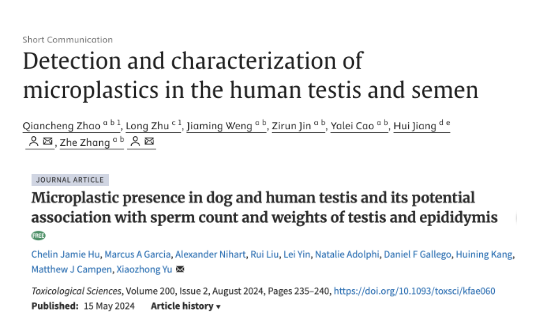
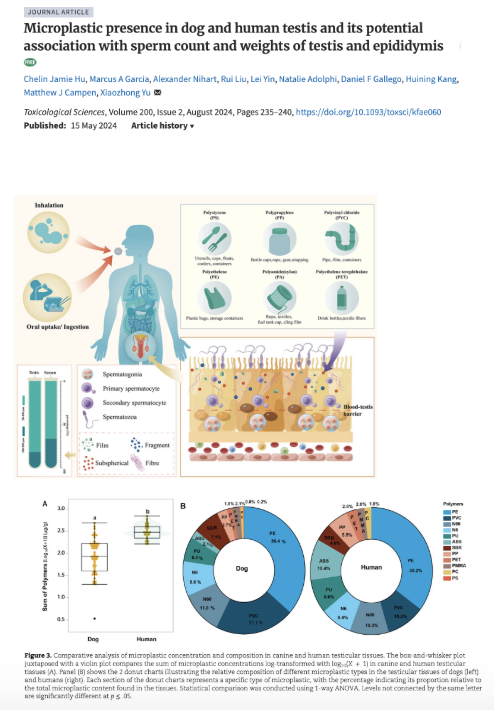
2/ Similar correlations have been observed for plastic leachables, but never for microplastics, and never longitudinally over time with effective mitigation interventions.
Earlier studies showed correlations between serum, blood, and urine for some plastic leachables, including BPA and some phthalate metabolites. However, these were single-time point studies with no longitudinal follow-up or mitigation interventions.
BPA levels in semen correlated with blood levels and lower semen motility. Microplastics in semen can also leach BPA and other chemicals, in addition to their direct mechanical disruption of testicular tissue, triggering a range of oxidative, inflammatory reactions, and hormonal and endocrine disruptions.
Earlier studies showed correlations between serum, blood, and urine for some plastic leachables, including BPA and some phthalate metabolites. However, these were single-time point studies with no longitudinal follow-up or mitigation interventions.
BPA levels in semen correlated with blood levels and lower semen motility. Microplastics in semen can also leach BPA and other chemicals, in addition to their direct mechanical disruption of testicular tissue, triggering a range of oxidative, inflammatory reactions, and hormonal and endocrine disruptions.
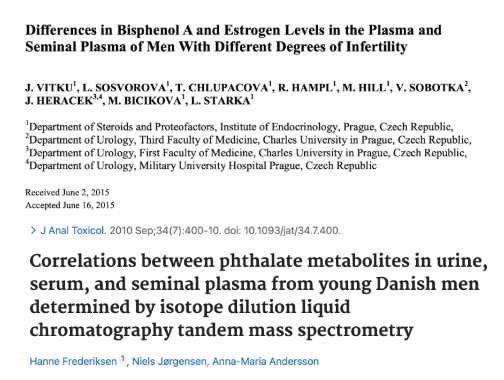
3/ Microplastics in the testis and semen can disrupt sperm motility, hormones and fertility markers, the good news this seems all reversible based on my results.
A 2024 study from China, involving 113 participants, corroborated these findings, detecting microplastics in all tested semen and urine samples. This study further elaborated on the risks associated with specific microplastic particle exposure, revealing that PTFE exposure correlated with relative reductions of 14% in sperm total counts, 9% in concentration, and 15% in motility.
Additional analysis indicated that each extra type of microplastic particle detected heightened the risk of fertility disruption. PTFE, in particular, was 3.5 times more likely to impair semen quality compared to other microplastic types.
As PTFE is commonly used in Teflon non-stick cookware, this provides another compelling reason to completely avoid such products.
A meta-analysis of 36 studies reveals that microplastics induce oxidative stress in the male reproductive system, leading to testicular inflammation, cell death, and reduced testosterone levels, sperm production, and motility. For example, mice exposed to polystyrene microplastics in drinking water exhibited lower blood testosterone, decreased sperm viability, and increased sperm abnormalities. Microplastics were found to infiltrate and disrupt the function of Leydig cells, which are responsible for testosterone production.
The presence of environmental toxins in semen has long been recognized as an early indicator of exposure. For instance, studies have shown that new exposure to heavy metals like cadmium, copper, and zinc leads to earlier and higher concentrations of these metals in semen, with a corresponding decline in semen quality and viability. My findings suggest that this principle extends to microplastic particles as well: microplastics appear in semen earlier and in potentially higher concentrations. The good news is that these effects seem to be fully reversible once blood levels are corrected.



A 2024 study from China, involving 113 participants, corroborated these findings, detecting microplastics in all tested semen and urine samples. This study further elaborated on the risks associated with specific microplastic particle exposure, revealing that PTFE exposure correlated with relative reductions of 14% in sperm total counts, 9% in concentration, and 15% in motility.
Additional analysis indicated that each extra type of microplastic particle detected heightened the risk of fertility disruption. PTFE, in particular, was 3.5 times more likely to impair semen quality compared to other microplastic types.
As PTFE is commonly used in Teflon non-stick cookware, this provides another compelling reason to completely avoid such products.
A meta-analysis of 36 studies reveals that microplastics induce oxidative stress in the male reproductive system, leading to testicular inflammation, cell death, and reduced testosterone levels, sperm production, and motility. For example, mice exposed to polystyrene microplastics in drinking water exhibited lower blood testosterone, decreased sperm viability, and increased sperm abnormalities. Microplastics were found to infiltrate and disrupt the function of Leydig cells, which are responsible for testosterone production.
The presence of environmental toxins in semen has long been recognized as an early indicator of exposure. For instance, studies have shown that new exposure to heavy metals like cadmium, copper, and zinc leads to earlier and higher concentrations of these metals in semen, with a corresponding decline in semen quality and viability. My findings suggest that this principle extends to microplastic particles as well: microplastics appear in semen earlier and in potentially higher concentrations. The good news is that these effects seem to be fully reversible once blood levels are corrected.
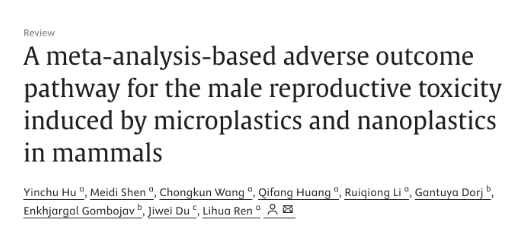
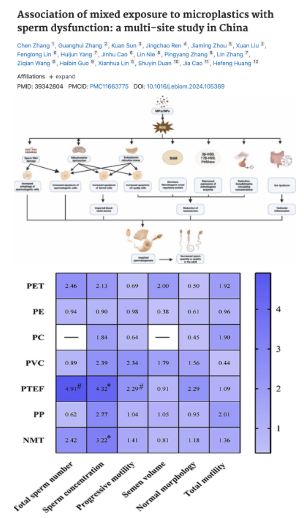
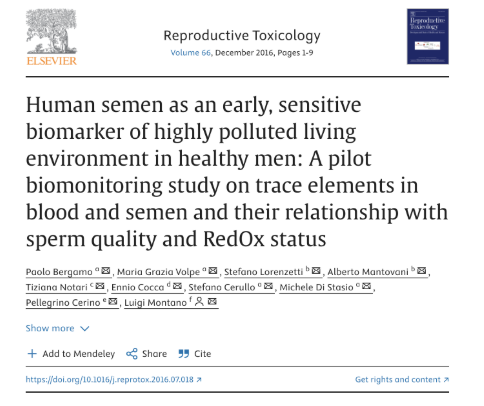
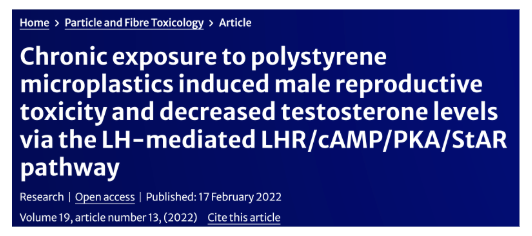
* a reverse osmosis water system is good to filter out microplastics. Sorry for botching that sentence.
• • •
Missing some Tweet in this thread? You can try to
force a refresh


